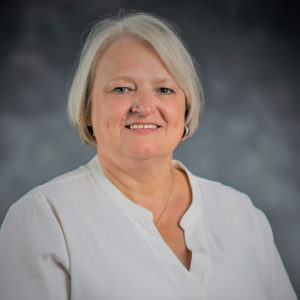Smith named to lead Department of Biological and Agricultural Engineering
Leadership style built around collaboration, support
Long-time faculty member and current interim department head Patti Smith, Ph.D., was named head of the Texas A&M College of Agriculture and Life Sciences Department of Biological and Agricultural Engineering, BAEN, effective Aug. 1.
Smith will be the first female head of the Department of Biological and Agricultural Engineering, which has the No. 3 ranked BAEN graduate program in the nation.

“I am very excited and honored by this opportunity to serve biological and agricultural engineering students; the faculty and staff and former students as department head,” Smith said. “I have been here 22 years, so I am looking forward to working within the department in this new capacity to improve our ability to address challenges, increase our capabilities and make sure we are leading in the biological and agricultural engineering fields.”
Jeffrey W. Savell, Ph.D., vice chancellor and dean for Agriculture and Life Sciences, said Smith’s appointment provides leadership and institutional knowledge that can build on strong relationships in and outside the department.
“Dr. Smith is the right person to lead the department to new heights,” he said. “Her vision for the department will strengthen Texas A&M AgriLife’s ability to meet the college’s academic and land grant missions as emerging science continues to push innovation. I look forward to collaborating with her to ensure that our college remains a vitally important and influential institution across the agricultural and life sciences.”
Seeing opportunity, leading by engaging
Smith said her philosophy as a department head will revolve around collaboration and support. She said it is her job to make sure faculty have the resources to do their jobs whether performing cutting edge research or providing the best educational experience possible for students.
Her goal is to provide a well-funded, well-organized academic and scientific environment for faculty, staff and students. Smith said this will require purposeful engagement with state and federal policy makers, agencies, commodity groups and professional groups like the American Society of Agricultural and Biological Engineers. Retaining and recruiting faculty, undergraduate and graduate students will also be a focal point as department head.
As with most departments engaging in, and advancing, cutting edge technologies, Smith identified funding as a challenge. However, she is confident that collaboration can create opportunities that will bolster BAEN’s research and education capacity.
“One of the things we’re embracing is the concept of a circular bioeconomy, which describes everything we do, from soil health to ag production, post-harvest, food processing and completing that circle by using waste and biomass to create fuels and other products,” she said. “I think there is an incredible opportunity for the department, the college and the state of Texas to lead in a way that improves productivity, economic opportunity and overall quality of life here and around the globe.”
A strategic look forward
The department has begun a new strategic planning effort to make sure its direction aligns with the land grant mission and the priorities for Texas A&M AgriLife Research, Texas A&M AgriLife Extension Service and the state of Texas.
Smith said she feels like BAEN is positioned well to build on its reputation in the biological and agricultural engineering and agriculture systems management fields. Along those lines, she feels there is a fresh understanding among her fellow department heads that collaborative grants and projects can move science and technology forward and help meet individual and collective objectives, including educating students in rapidly changing fields.
“There is more incentive to collaborate than compete,” she said. “Whether that is co-producing research or developing an interdisciplinary degree program or certificate for students, I feel like there is an understanding among College of Agriculture and Life Sciences departments that pulling in unison and in the same direction helps everyone.”
Smith’s path to department head
Smith previously served as director of the BAEN undergraduate program. As director, she was responsible for accreditation assessments, curricula revisions and compliance, student recruiting and admissions, student disciplinary actions and credentialing of all faculty for teaching. Smith also teaches undergraduate and graduate courses in soil and water engineering and stochastic methods and participates as an undergraduate student advisor.
As associate department head for academic programs, Smith oversaw and coordinated both Agricultural Systems Management and Biological and Agricultural Engineering academic programs within BAEN. She is also a voting member of the College of Engineering and College of Life Sciences curricula committee.
Smith’s focus as a researcher has been related to hydrology and water quality with an emphasis on utilization, development and improvement of computer simulation and stochastic modeling to address challenges related to climate and land use/land cover changes.
In addition to her longstanding success as a member of BAEN, Smith has been recognized as an industry leader. She was awarded the U.S. Department of Agriculture Excellence in College and University Teaching in the Food and Agricultural Sciences in 2015 and named a fellow to the American Society of Agricultural and Biological Engineers in 2020.
Smith graduated with a master’s degree in Biosystems and Agricultural Engineering at Oklahoma State University, and a doctorate in Biological and Agricultural Engineering from North Carolina State University.
“I’ve been at the university for a long time, and I think the department is in a good place. I am excited about our future,” she said. “We know the challenge is to make our work relevant and impactful and to push the boundaries of our field. But, as problem solvers, we also know challenges represent opportunity. I look forward to working with department faculty and engaging with other departments here and other stakeholders outside the university to ensure BAEN is a part of the solution.”


